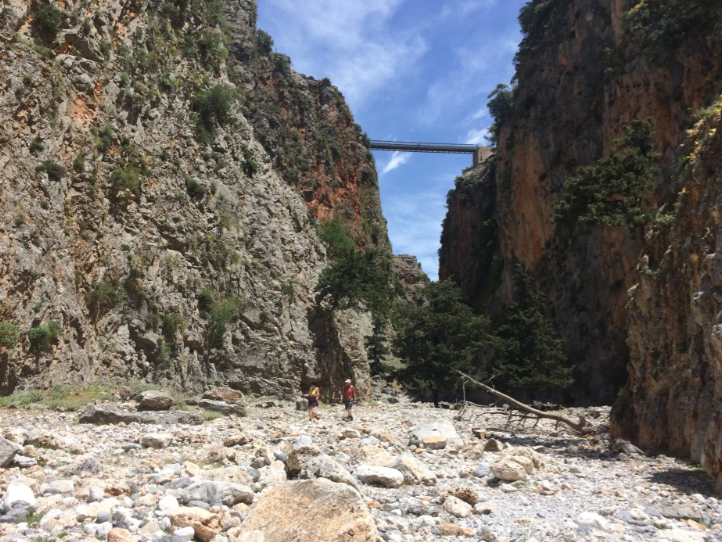Crete, the largest of the Greek islands, is renowned for its stunning natural beauty and diverse landscapes. Among its most remarkable features are the numerous gorges that cut through its rugged terrain. These gorges, formed over millennia by the relentless forces of water and wind, offer some of the most breathtaking and challenging hiking experiences in the Mediterranean. Exploring the rugged terrain of Cretan gorges provides adventurers with a unique opportunity to witness the island’s geological wonders, rich biodiversity, and ancient history up close.
The Allure of Cretan Gorges
Cretan gorges are not just natural formations; they are gateways to understanding the island’s geological past and its ecological richness. These deep, narrow valleys, often with towering limestone walls, are havens for rare plant and animal species. Many gorges are also steeped in myth and history, having been used as hideouts during wars and as pathways for ancient civilizations.
Samaria Gorge: The Crown Jewel
The most famous of Crete’s gorges is undoubtedly the Samaria Gorge. Located in the White Mountains (Lefka Ori) of western Crete, this 16-kilometer-long gorge is one of the longest in Europe. The trek through Samaria starts at the Omalos Plateau and descends through a dramatic landscape of steep cliffs, dense forests, and flowing streams, ending at the coastal village of Agia Roumeli.
Hiking Samaria Gorge is a challenging but rewarding experience. The narrowest point, known as the Iron Gates, is just 3 meters wide, with cliffs rising up to 300 meters on either side. Along the way, hikers can spot rare Cretan wild goats (kri-kri), ancient ruins, and beautiful wildflowers. The trek typically takes five to seven hours and is best attempted in the spring or autumn when the weather is mild.
Imbros Gorge: A Scenic Alternative
For those seeking a less strenuous hike, Imbros Gorge offers a shorter and more accessible alternative to Samaria. This 8-kilometer gorge is located in the Sfakia region and is known for its scenic beauty and historical significance. The trail starts near the village of Imbros and winds through a landscape of towering cliffs, lush vegetation, and interesting rock formations, ending near the village of Komitades.
Imbros Gorge was historically an important route for Cretan shepherds and traders, and during World War II, it served as a vital escape route for Allied soldiers. Today, it provides a relatively easy hike that can be completed in about three hours, making it suitable for families and casual hikers.
Aradena Gorge: A Hidden Gem
Aradena Gorge, also in the Sfakia region, is one of Crete’s more challenging and less-visited gorges. The hike starts near the abandoned village of Aradena and descends steeply through a dramatic landscape of cliffs and boulders. The gorge is characterized by its wild and rugged terrain, offering a more adventurous experience for seasoned hikers.
One of the highlights of Aradena Gorge is the ancient stone bridge, one of the tallest in Greece, which spans the gorge near its entrance. The hike takes about four to five hours and ends at the picturesque Marmara Beach, where hikers can cool off with a refreshing swim in the Libyan Sea.
Agia Irini Gorge: A Tranquil Retreat
Agia Irini Gorge, located in the western part of Crete, is another beautiful and less crowded option. This 7.5-kilometer gorge begins near the village of Agia Irini and winds through a lush, forested landscape filled with oleanders, plane trees, and aromatic herbs. The trail follows a gentle descent and is well-marked, making it suitable for hikers of all levels.
The gorge is known for its tranquility and natural beauty, offering a peaceful retreat away from the more popular tourist spots. The hike typically takes about three hours and ends near the village of Sougia, where hikers can relax and enjoy the local hospitality.
Kourtaliotiko Gorge: A Geographical Wonder
Kourtaliotiko Gorge, located in the central part of Crete near the town of Rethymno, is renowned for its dramatic scenery and unique geological formations. The gorge is named after the “kourtala,” or clattering sound, created by the wind as it rushes through the narrow canyon. The hike through Kourtaliotiko Gorge offers stunning views of towering cliffs, waterfalls, and the crystal-clear waters of the Megalos Potamos River.
One of the highlights of this gorge is the beautiful Kourtaliotiko Falls, a series of cascading waterfalls that create a serene and picturesque setting. The hike is relatively short, taking about one to two hours, but it provides a memorable experience of Crete’s rugged natural beauty.
Conclusion
Exploring the rugged terrain of Cretan gorges is a thrilling and enriching experience that showcases the island’s diverse landscapes and rich natural heritage. Whether you’re trekking through the famous Samaria Gorge, discovering the historical significance of Imbros Gorge, or adventuring into the wild depths of Aradena Gorge, each hike offers its own unique challenges and rewards. These gorges not only provide spectacular scenery and opportunities for outdoor adventure but also offer a deeper connection to Crete’s geological, ecological, and cultural history. For nature lovers and hiking enthusiasts, the gorges of Crete are a must-visit destination, promising unforgettable experiences and lasting memories.


